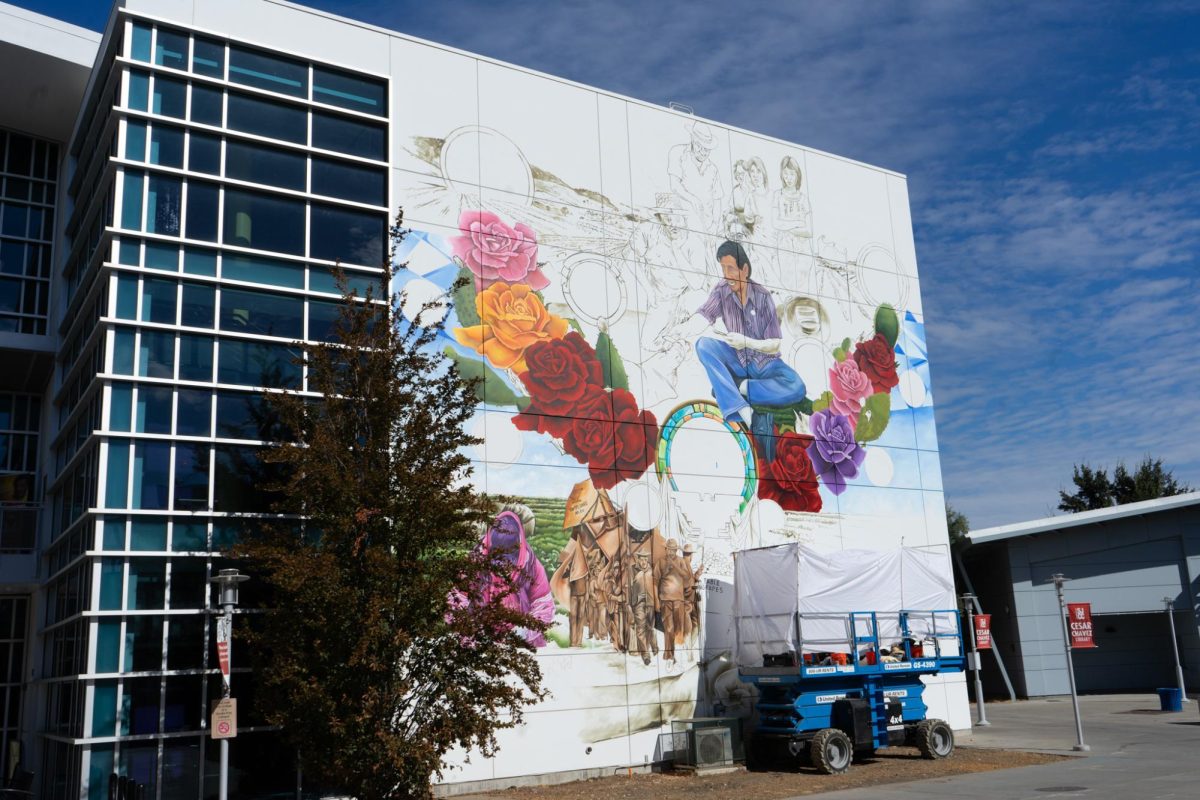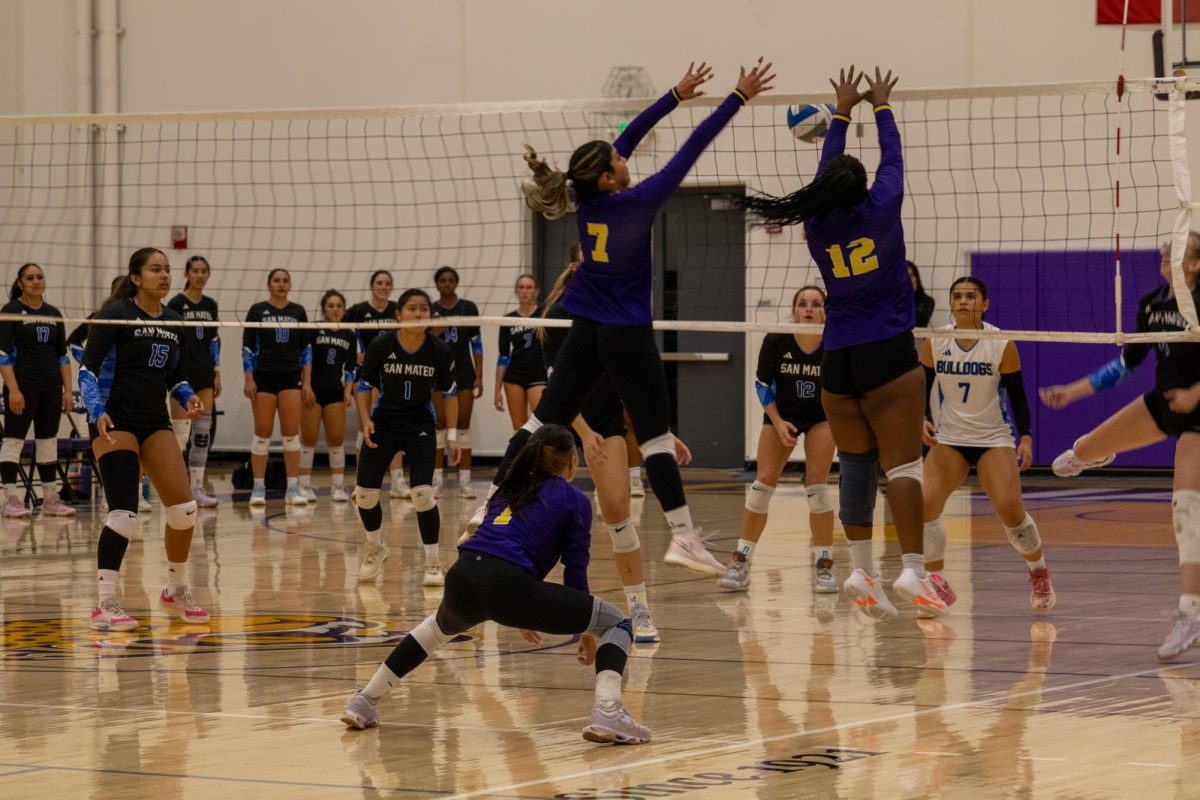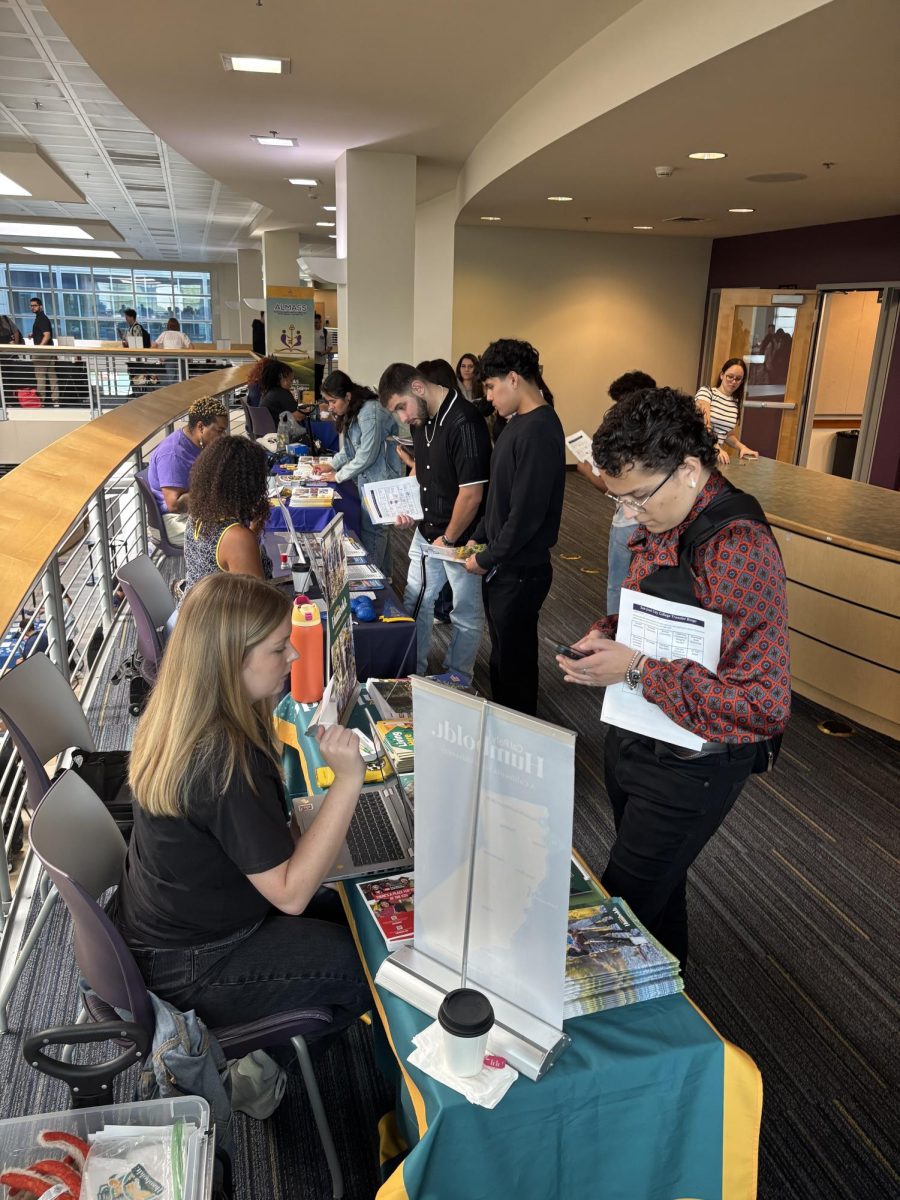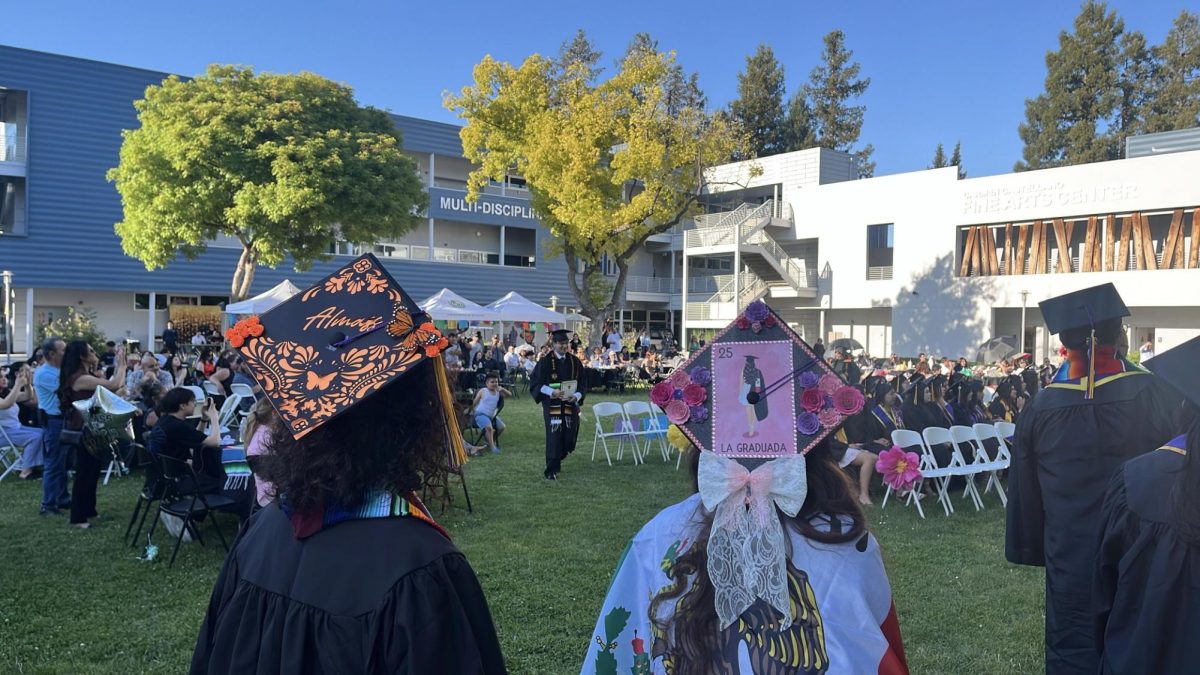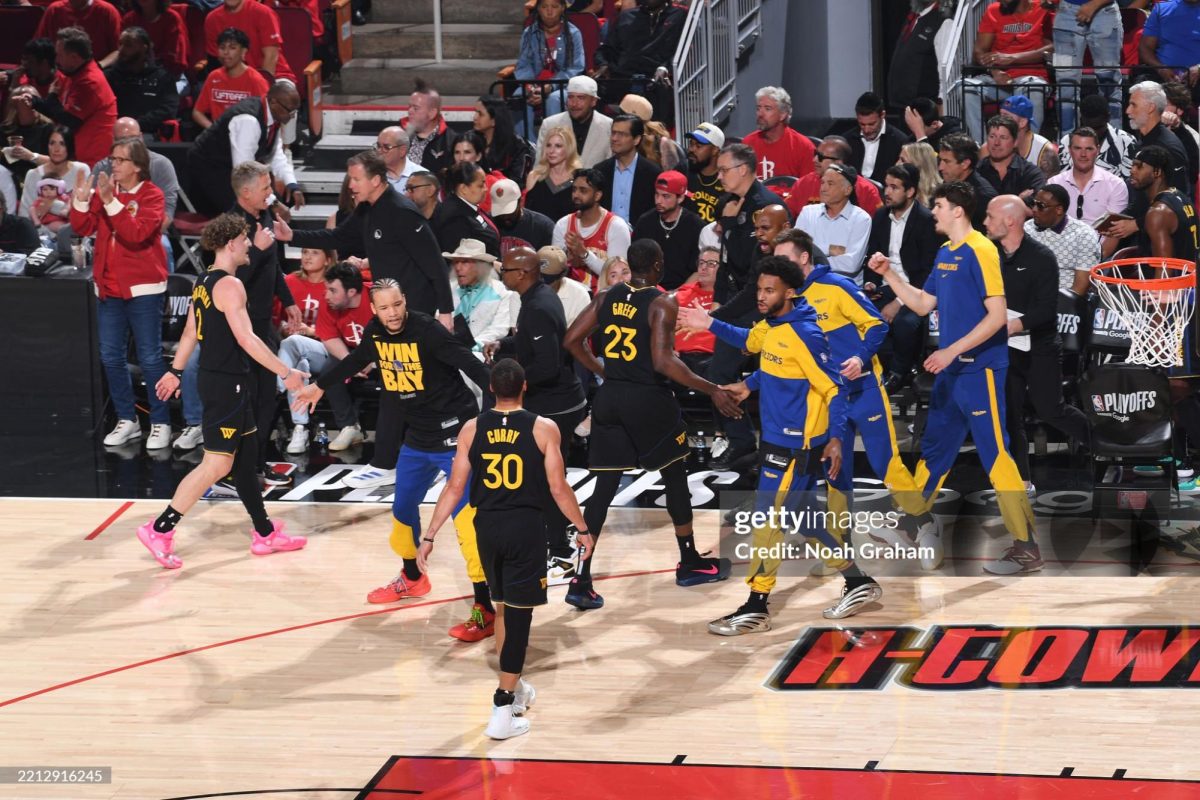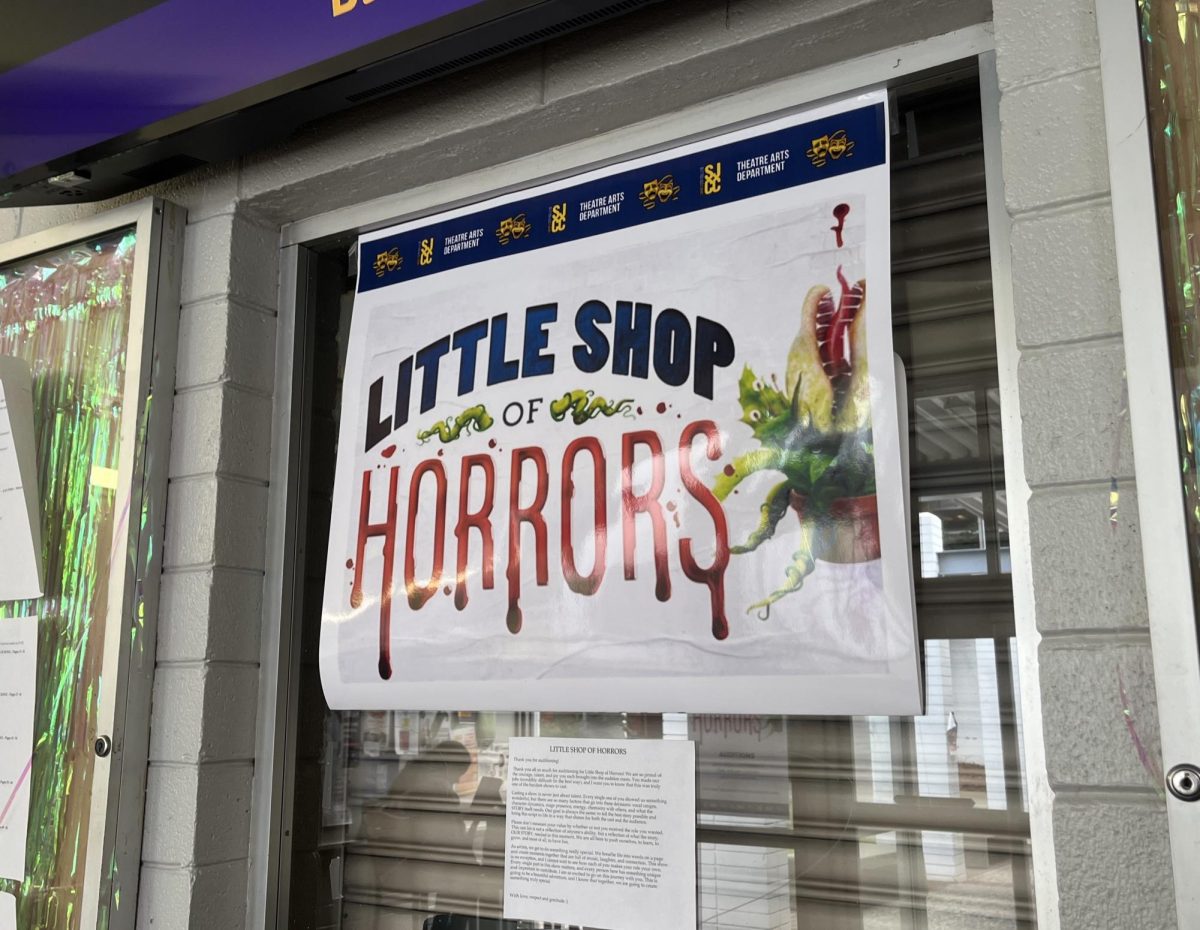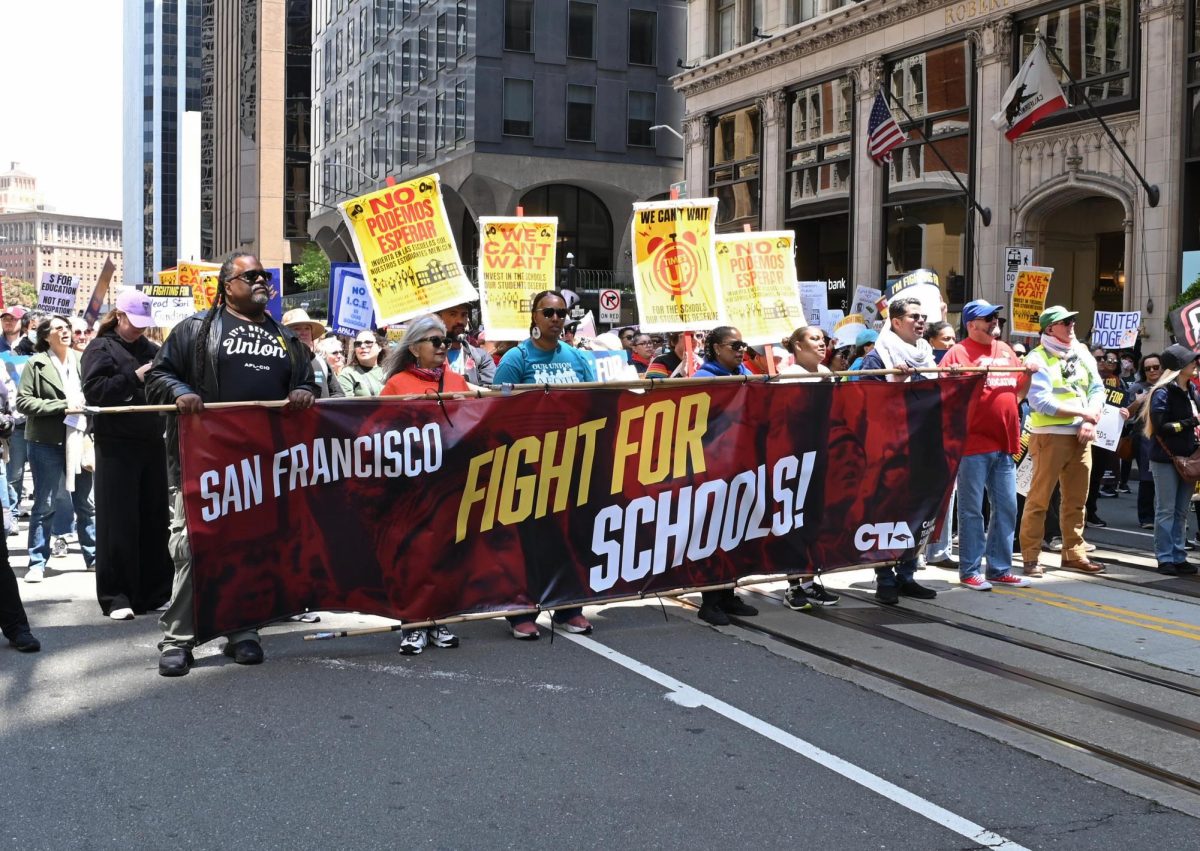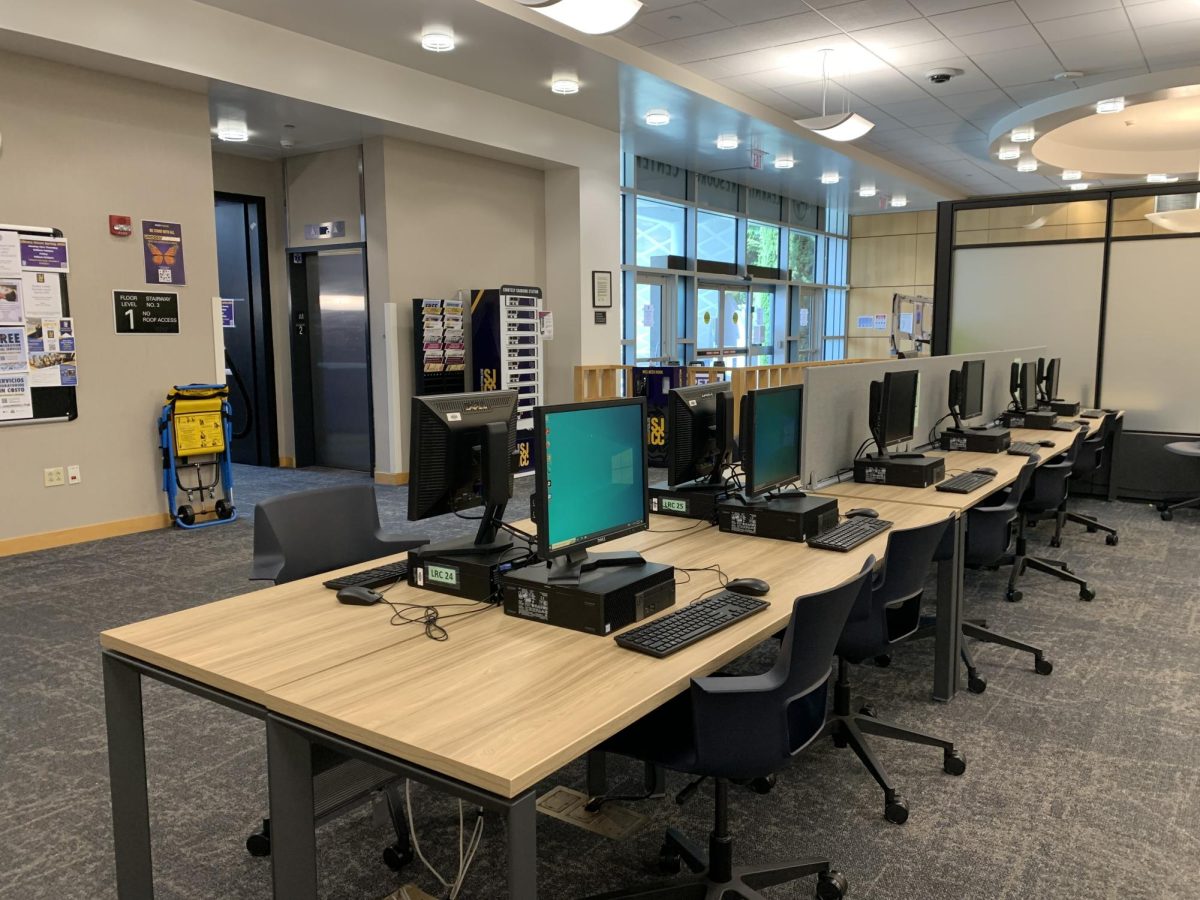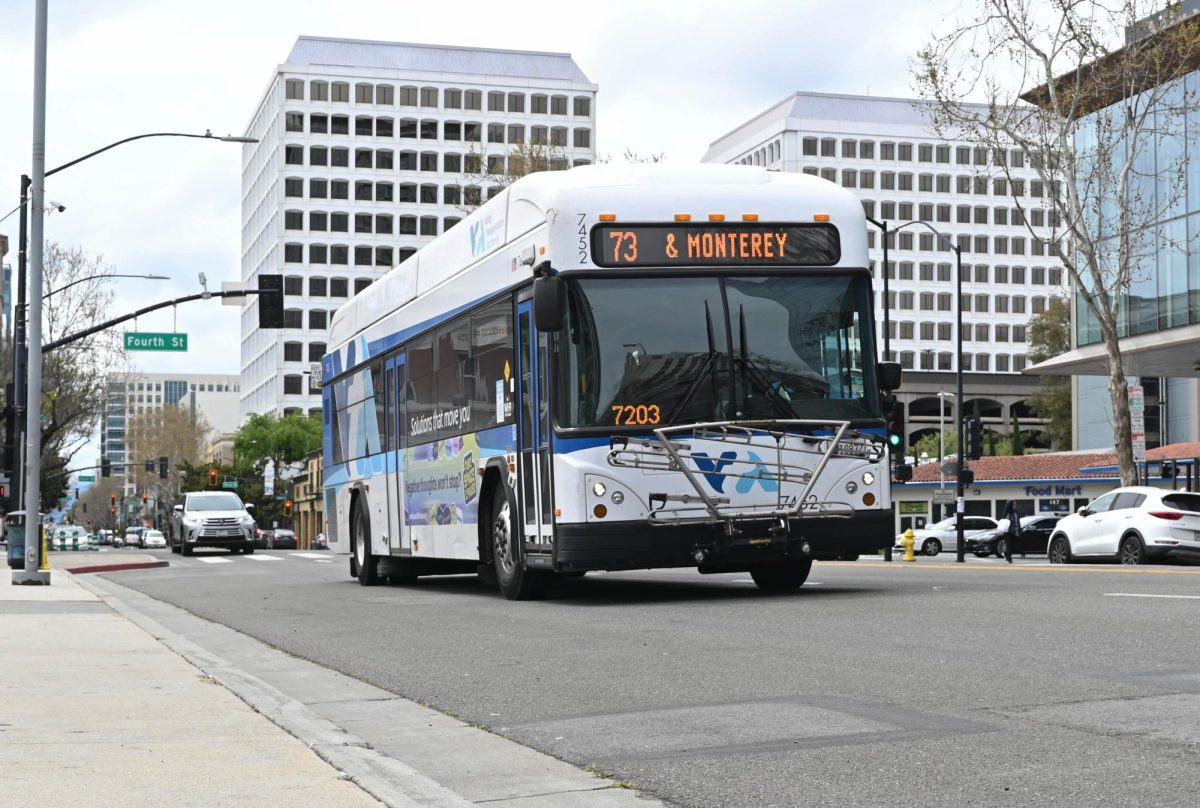Roses, cacti, and farmworkers are taking center stage in a new on-campus mural, painted primarily by a prominent local artist in partial collaboration with members of San Jose City College’s ALMASS program.
The mural is a tribute to Cesar Chavez’s activism, which brought better working conditions for Latino farmworkers in the 1970s. It is located on the side of the very library that bears his namesake.
It is the latest effort by SJCC to memorialize Chavez’s efforts, which includes an exhibit inside the library dedicated to Chavez, and a new “Sí Se Puede” program, named after a slogan heavily associated with Chavez.
Conversations about the mural have been underway since as far back as 2021, but the effort faced delays over a protracted dispute regarding licensing rights.
SJCC’s Director of Marketing and Public Relations, Daniel Garza, told the Times that the college’s status as a publicly-funded institution prevented it from granting licensing rights to a previous muralist.
“It’s been a project we’ve always been interested in,” Garza said. “The challenge for us is [that] we’ve never done anything like this before, so there was no template.”
Painting of the mural, still ongoing due to unexpected logistical challenges suffered in recent months, is expected to be completed soon,
A ribbon-cutting ceremony is slated for Nov. 25. At least eight members of the Chavez family have confirmed their attendance.
Carlos Rodriguez, a muralist with a lengthy career beautifying public spaces, is responsible for most of the work on the Chavez Mural.
He says much of the canvas is a symbolic tribute to Chavez and his family.
“Without his family, Chavez would have [had] less to fight for,” Rodriguez told the Times.
Rodriguez immigrated to the United States from Mexico in the 1980s, which is reflected in his artwork, which aims to bring communities together through cultural and spiritual meaning.
According to Rodriguez, the eight vibrant roses at the center of the massive mural, each representing one of Chavez’s children, who he says played an outsized role in motivating Chavez to succeed in his activism.
According to Rodriguez, roses are significant to people of Mexican-American and Indigenous cultures as a symbol of resistance against oppressive forces, such as racism and poor working conditions. Farmworkers — who historically are predominantly Hispanic or Indigenous — suffer from higher rated of heatstroke, lacking shade, and limited access to clean water, conditions that Chavez made his name fighting against.
Rodriguez also explained that the cacti in the mural serve as a stand-in for farmworkers as a whole, drawing a connection between their shared ability to thrive amid a hostile environment.
“That whole wall is speaking to him,” Garza told the Times about Rodriguez. It’s artistic. It’s physical. It’s spiritual. It’s all those things for him. And his heart and soul is in that thing, so it’s really cool.”
Garza says he is also working on a supplementary video to dive deeper into the mural’s symbolism.
“We just think it’s going to be something that people will talk about for many, many years to come,” Garza said.
Rodriguez hopes the community will, after seeing the mural, ask why Cesar Chavez is so significant and how they can help carry on his legacy.
“Really, ask yourself, what do you see? What is this particular scene depicting?,” he said.

